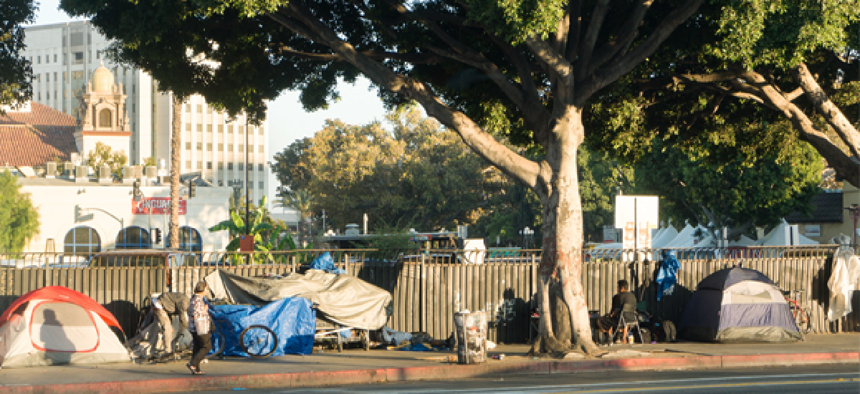Tracking COVID in homeless populations


Connecting state and local government leaders
An app that helps volunteers count of homeless populations has been adapted to perform health and wellness checks on people experiencing homelessness during the coronavirus pandemic.
A mobile app for point-in-time (PIT) counts of homeless populations has been adapted to perform health and wellness checks on people experiencing homelessness during the coronavirus pandemic.
Simtech Solutions has taken the foundation of its Counting US app and adjusted the survey questions to screen people who are homeless for symptoms of COVID-19. The Health and Wellness assessment asks questions, such as whether the person has had any flu-like symptoms in the past 14 days, and logs age ranges, veteran status and chronic health conditions to identify high-risk individuals.
To conduct a survey, volunteers download the app from the Apple App or Google Play stores and register for an account. They enter a region-specific setup key to ensure that the account is associated with the correct data store. The app is automatically configured with the survey questions and geographical boundaries.
“Because it’s mobile-based technology, when you conduct a survey, it captures the date, the time and the location, as well as the information about the survey,” Simtech President Matt Simmonds said during a recent webinar titled “COVID-19 and Data Collection Resources for Your Community” hosted by the National Alliance to End Homelessness.
The data is stored locally to the mobile device only when it’s not connected to the internet. Otherwise, it goes from the app to Simtech’s regional command center, hosted in an Amazon Web Services cloud, where it’s added to dashboards and map layers that allow administrators to zero in on outbreak hot spots. All data can be exported in CSV format, and reports can be published as PDFs.
The survey has a triage option with a new custom tagging feature that lets survey-takers determine the best place for the respondents. Because of shelter-in-place orders, it often makes the most sense for people to stay where they are, assuming they have access to food and handwashing stations, Simmonds said. The app can also help survey-takers direct respondents to places where they can get medical care or temporary housing. Several cities have opened hotel rooms and college dorm rooms to homeless populations.
“How do you take your population of 5,000 people on the street and figure out which residential sleeping location is best for them?” Simmonds told GCN. “That’s the notion of having a screening tool [and] the command center to operationalize that decision so then you have oversight and management in place for this quickly.”
Simtech also offers the Encampment Screening Tool to ensure that anyone sheltering in place has basic needs met, he added. For instance, guidance from the Centers for Disease Control and Prevention suggests that encampments of 10 or more people need handwashing stations and portable latrines. Screening each encampment and tracking that data in real time helps ensure they’re complying with those rules, he said.
The Regional Task Force on the Homeless in San Diego is using recent PIT count results to direct resources to the area’s 7,619 residents experiencing homeless during the crisis.
“During the COVID-19 pandemic, these best practices and new technology have delivered more accurate, actionable data to public health officials and have allowed outreach workers to specifically target at-risk homeless individuals for life-saving services,” said Chris Ward, chairman of the task force, in a recent statement. “This data will continue to be analyzed in our ongoing efforts to combat COVID-19.”
Simtech is offering the app for free for six months, although the end date is fluid, Simmonds said. The company recently shared a beta release of a new assessment to track what resources have been provided, along with who received them, where and when.
“This whole process has highlighted just how important it is to have these systems in place (both the tech as well as the people to manage operations) before a natural disaster or pandemic hits,” he said.
NEXT STORY: SDN eases pandemic’s telecom burden




